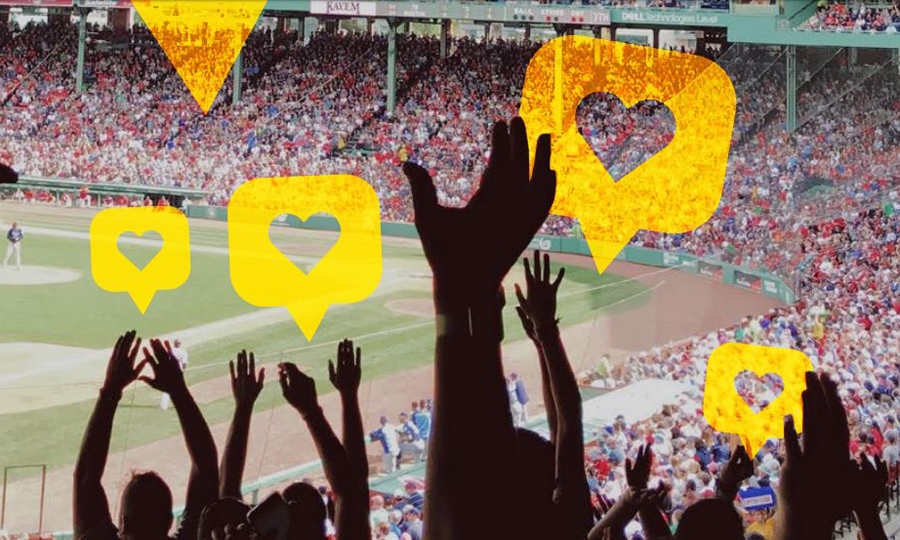Thought Leadership: Tata Communications’ Mehul Kapadia on How Technology Is Changing the Game for Sports Marketers
Managing Director of Tata Communications’ F1 business shares how rightsholders are using tech to develop deeper relationships with fans
Story Highlights
By Mehul Kapadia, Managing Director of Tata Communications’ F1 Business; Global Head of Marketing, Tata Communications
It is a fascinating time in the world of sports, with digital platforms enabling a complete reinvention in the way fans engage with the action and their heroes. Rightsholders, broadcasters, sponsors and others in the sports ecosystem are capitalizing on these innovations in several ways to broaden sports’ appeal amongst new audiences and create more immersive fan experiences – which in turn generate new revenue opportunities.

Modern technology is changing how broadcasters, leagues, and teams are deepening relationships with their fans on game day.
A part of the digital opportunity for sports is in blurring the lines between the in-stadium and remote viewing experience. While technology has made watching sports easier than ever, the live event experience is still critical to the industry’s success. Organizations must offer fans a platform that provides an interactive venue experience.
The fundamental difference between remote viewers and crowds inside the venues is that the former are spectators whereas the latter are participants. So, as the digital fan experience gets better, the pressure is increased on venues to improve the live experience too. Creating a great viewing experience will drive participation.
Improving the live experience can involve adding elements to it which are complementary to the sporting action and make it more accessible for different audiences. F1, for example, has augmented the fan experience with its Fan Festivals that bring the sport from the circuit smack in the middle of a city like Shanghai or London to help grow the fan base of the sport, and turn the Grand Prix into even more of a multi-day spectacle for the whole family.
Meanwhile, on-line streaming service DAZN signed a 10-year deal with Japan’s Professional Football League in 2016, enabling WiFi access in stadiums to bring high-quality video content for fans and enable fans both in and around the stadium to enjoy the action in different ways. This also extends the live experience through user-generated content on social media.
Making Invaluable Emotional Connections
Another important aspect of the sporting experience is the ability for fans to identify emotionally with an individual or team. Facilitating these emotional connections through human interactions with athletes via digital platforms is becoming invaluable for rights holders, broadcasters and sponsors. Focusing on the stories of star players is particularly important in building successful sports partnerships, where emotive storytelling is key.
Social media, for example, is helping to drive deeper fan engagement. Stars like Rafael Nadal, Roger Federer and Serena Williams have tens of millions of social media followers between them, but up and coming stars like Kyle Edmond are already hitting the mark too. It’s also becoming common for sportspeople to demonstrate both their star quality and that they are just like us, away from the sport. The F1 driver Valtteri Bottas and diving star Tom Daley are amongst many top sportspeople who regularly share Instagram updates with their fans; from home, the gym or out walking the dog – often without a product placement or message from a sponsor. Big stars putting themselves out there in this way leads to deeper personal connections, which leads to greater affinity with them and their sport, boosting its popularity for the commercial benefit of that sport’s ecosystem.
There’s an increasing number of formats that sports celebrities can harness to engage with their fans too. This year, the NHL introduced a new video series for the Stanley Cup Playoffs where top ice hockey players recorded short video diaries which were then posted across the league’s social accounts.
Taking this idea a step further, Cameo is an app that offers personalized video shout-outs to fans from their favorite celebrity or sport star, for a fee. What’s more, immersive technologies like augmented reality (AR) and virtual reality (VR) apps are helping fans to get closer to the action. At Tata Communications, we’ve tested in action 360-degree video with the European Tour and Formula 1, to show to the motorsports and golf ecosystems how fans be brought closer to their favorite stars, if only virtually. New technologies like this that augment the live or TV experience are essential for keeping a digitally-savvy fan base hooked.
The bottom line is that sport is, and always will be, a communal experience. Live sports events have an uncanny ability to bring people from all walks of life together, and this unifying quality means that the shared experience will never diminish in importance. Technology has improved the way the experience is delivered, both at home and in the stadium, making it easier than ever for fans to come together in all different communities to access events and athletes from anywhere at any time.

